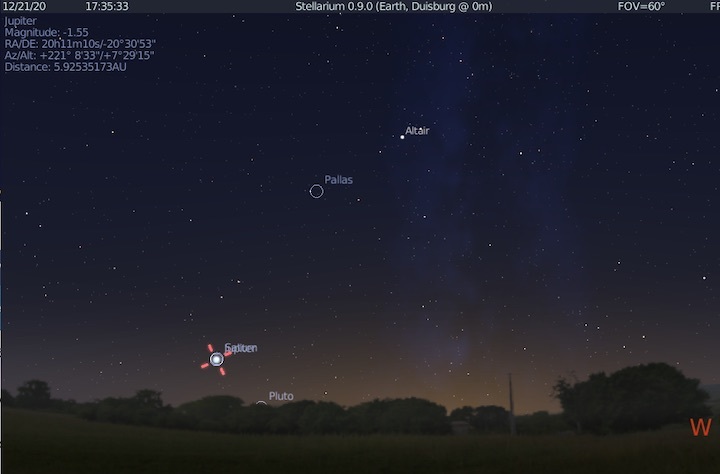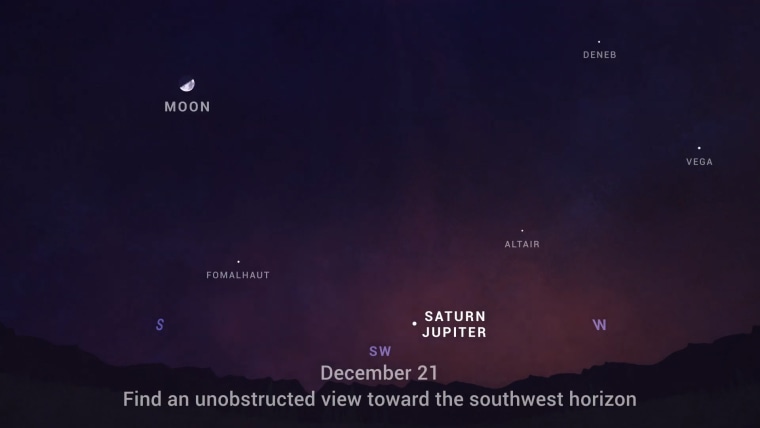11.12.2020

The Great Conjunction of 2020 will brighten the darkest day of the year as the two giant planets of our solar system draw closer together in the night sky than they have been in centuries.
By chance, the day that Jupiter and Saturn will appear closest for Earth-based stargazers is Dec. 21, the winter solstice, which is the longest night of the year in the northern hemisphere.
The double planet view is also known by some astronomers as the "Christmas Star" because of a belief that the biblical tale of the Star of Bethlehem could have been a planetary conjunction. Although around two thousand years ago, Venus and Jupiter were closest — not Jupiter and Saturn, as is the case for the "Christmas Star" of 2020.
The last time the two planets were so close was 1623, but stargazing conditions at the time meant the astronomical event likely was not seen by earthlings. The last time such a close pairing was observable to the naked eye was in 1226, according to EarthSky.

On the evenings of December 15 through 18, stargazers can easily find Jupiter and Saturn moving in conjunction by looking toward the waxing crescent moon in the western sky 45 minutes after sunset, according to NASA's Night Sky Network.
"Keep in mind that while the two gas giants may appear close, in reality they are hundreds of millions of miles apart," NASA writes."This will still be quite a striking sight, but you will need to look fast as both planets will set shortly after sunset."
On the solstice night, Dec. 21, the moon will be higher in the sky, but Jupiter and Saturn will remain closer to the horizon in the western sky and might look like one large star. From an amateur telescope, however, a stargazer might be able to clearly see both planets and some of their moons within one frame of view.
"I have been watching them daily," Pat Hartigan, an astrophysicist at Rice University, wrote in an email.
Quelle: NBCNews
